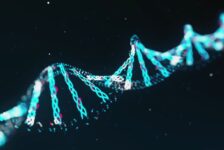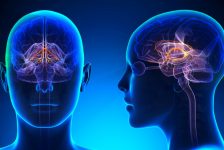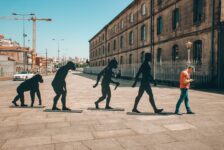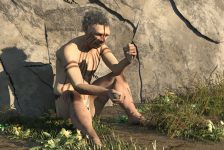When the first Neanderthal fossils were discovered in the 19th century, no one would have foreseen the fascinating and compelling story of human origins that was about to unfold. From 1829, when the first Neanderthal bones were found in Belgium, to the first discovery of a Neanderthal skull in 1848 in Forbes’ Quarry, Gibraltar, a succession of fossil discoveries revealed tantalizing clues about the incredible array of archaic humans that once inhabited our planet. Discoveries of Homo erectus, another archaic species, began in 1891. Subsequent discoveries of numerous other archaic humans served to further pique our curiosity as to what could be gleaned from these intriguing remains of ancient humans.
As more examples of ancient hominins continued to surface, we could only speculate as to the nature of our relationship (if any) to these extinct humans. What was palpably evident was that these remains could only reveal so much. We craved more data that could reveal a more detailed and clearer picture. In the meantime, innovations in the field of genetics suggested that our wish may soon be granted, and in 2010, the Neanderthal genome was sequenced.
Like a genie in a bottle, genetics granted our wish and allowed us to see in stunning clarity, the compelling story of the origins of our species—how we are related to other hominins to a lesser or larger degree, and it uncovered a stunning tale of intrigue and mystery.
In the same year, another hominin species was discovered in the Denisova Cave in the Altai Mountains in Siberia. Named “Denisovans” after the cave in which these tiny remains were found, the subsequent sequencing of the Denisova Genome yielded some unexpected results. The DNA evidence showed the Denisovans to be more closely related to Neanderthals than modern humans, and just like their Neanderthal cousins, they also interbred with early members of our species, leaving their genetic footprint in the genome of modern humans.
Previous estimates are that some 6 percent of contemporary Papuans’ genomes come from Denisovans. Australian aborigines and those from Southeast Asian islands also have traces of Denisovan DNA. East Asians have 2.3 to 2.6 percent Neanderthal DNA, whilst people from Western Europe and Asia have retained some 1.8 to 2.4 percent Neanderthal DNA. African populations have virtually none because their ancestors did not mate with Neanderthals.
The data is so specific that we can now pinpoint genetic variants inherited from Neanderthals that may have contributed to some modern diseases. Neanderthal genes seem to have played a significant role in shaping some of us. It is highly likely that the new arrivals from Africa, tens of thousands of years ago, also benefited from these interbreeding episodes with their ancient cousins who were already in Europe and Asia, and there are compelling examples of this.
It seems the Denisovans bequeathed the EPAS1 gene variant to Tibetan people which helps them handle low levels of oxygen. Thanks to this mutation, they can cope with air that has 40 percent less oxygen than most of us need, so they can live on a 4,000-metre-high plateau where most of us would struggle. More recent genetic research suggests that modern humans may have interbred with Denisovans more than once.
So essentially, we have discovered that we were not always the only human species on the planet. We once shared the planet with at least 3 or 4 others, we interbred with them in Europe, Asia and in Africa as well. It seems Europe and Asia did not have a monopoly on these archaic dalliances.
Africa had its fair share of contemporaneous hominins so more examples of archaic admixture should be expected there. Hopefully, we will be able to extract viable DNA from the fossils of our extinct cousins in the near future. The warm climate makes the preservation of DNA highly problematic, but I certainly hope this will not always be the case. It would be fascinating to discover where Homo naledi and the Jebel irhoud fossils sit in this genetic game of musical partners.
Ultimately what the genetic picture reveals is that the emergence of our species is inextricably linked to the existence, and extinction, of other branches of humans on the bushy thicket that reveals the story of human evolution.
We are the lone survivors of a plethora of advanced primates that once called Earth their home. I find these discoveries unimaginably exciting and fascinating. The human family survived against the odds. This alone should engender a sense of kinship, and the wish to carry the torch forward into a world where all the descendants of the lucky few who escaped extinction, can coexist in harmony.
This lecture by Svante Paabo,Director of the Max Planck Institute of Evolutionary Anthropology in Leipzig elaborates on the genetic legacy of archaic admixture and what it reveals about human evolution.









